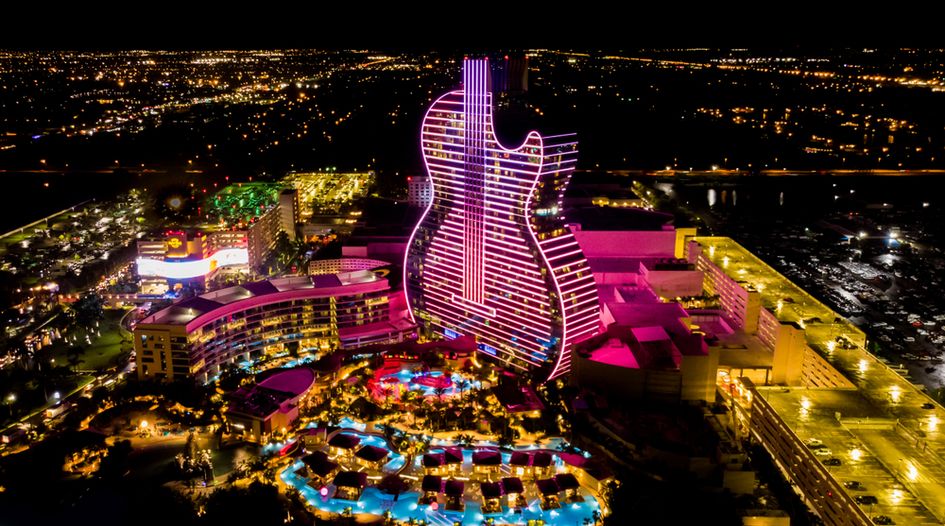TTAB rules unique building designs can acquire trade dress protection

With a twin set of precedential opinions – Palace Del Rio (88412764 and 88437801; TTAB; 25 May 2023) and Seminole Tribe of Florida (87890892; TTAB; 25 May 2023) – the TTAB has laid the foundation for determining whether building designs can be protected as service marks.
TTAB assesses hotel designs’ distinctiveness
At issue were the designs of the Hilton Palacio del Rio in San Antonio, Texas and the Seminole Tribe’s Hard Rock Hotel & Casino in Hollywood, Florida (see Figure 1).
Figure 1

In its case, Hilton sought separate registrations for the 3D design of the ‘River’ and ‘Street’ sides of its hotel building due to their “unique and readily recognizable design”, consisting of a pattern of alternating protruding and receding rectangular shapes created by the assembly of the hotel’s modular guest rooms. Similarly, Seminole Tribe argued that its guitar-shaped building was akin to product packaging, which can be protected under trade dress.
In both cases, the TTAB began by confirming that a building structure, if inherently distinctive and not mere product design, could constitute protected trade dress. It also analogised a hotel’s design to product packaging, dispensing with the need to demonstrate secondary meaning.
The board anchored its analysis of each hotel in the Supreme Court precedents set by Two Pesos v Taco Cabana (1992) and Wal-Mart Stores v Samara Bros (2000) However, it ruled that only the Seminole Tribe’s building design constituted protectable trade dress.
Why the TTAB decisions differed
The outcomes for Hilton and Seminole Tribe diverged due to differences in the distinctiveness of each’s building design.
In Hilton, the TTAB determined that the record did not demonstrate that the Palacio del Rio’s design was sufficient to differentiate it from competitor hotels. Although Hilton submitted customer declarations claiming that the hotel’s design was unique, the board did not credit such evidence on the grounds that the customers had no personal knowledge about what was commonplace in the hotel industry and that the declarations were substantively scant.
In Seminole, the TTAB found that the record reflected that no other hotel possessed the Hard Rock’s unique guitar design. Analogising its decision in Frankish Enterprises (2015), in which a monster truck was found distinguishable from all other monster truck designs on record, the board concluded that the guitar design was inherently distinctive.
Impact of the decisions
Now that hotels have cracked the door open for building design trademarks, it remains to be seen whether owners of other unique buildings will follow suit in applying.
As these cases collectively demonstrate, developing a supportive record founded in compelling evidence of uniqueness is likely necessary to secure trade dress protection for building design.
WTR recommends:
This is an Insight article, written by a selected partner as part of WTR's co-published content. Read more on Insight
Copyright © Law Business ResearchCompany Number: 03281866 VAT: GB 160 7529 10

